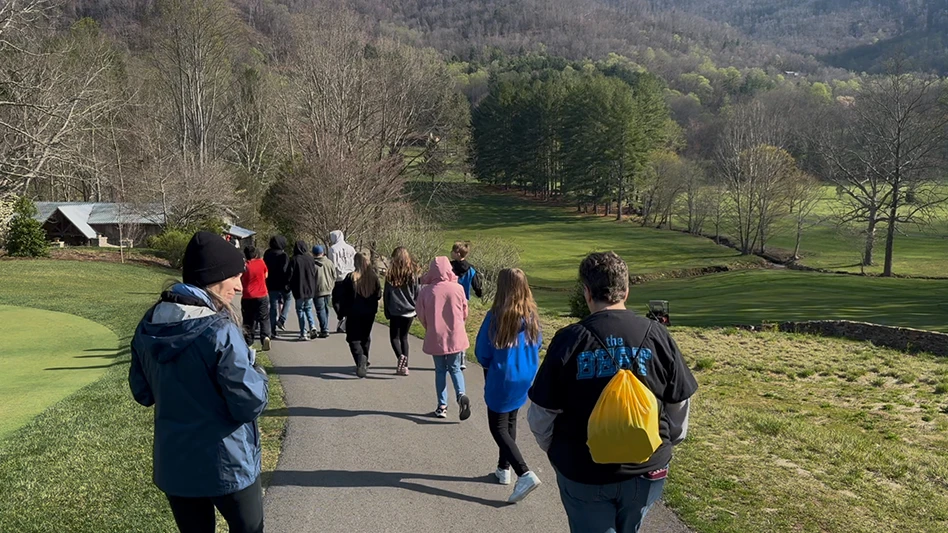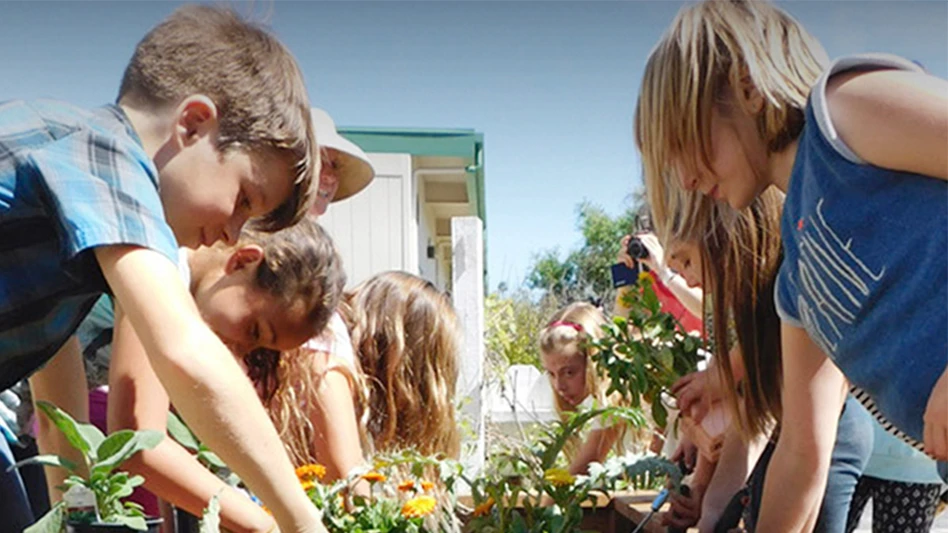
Trees can prove problematic for superintendents. Sure, they have their place on a golf course. They frame holes, provide shade in areas exposed to constant sun and are, well, nice for the patrons to look at, especially when they flower or change colors.
But they also prevent proper air flow around greens, interfere with play if allowed to spread their limbs too far into the fairways and near greens, their roots can cause havoc with irrigation systems, and they make a mess when the deciduous varieties drop their leaves in late autumn. And, whether because of climate change or merely the life cycles of living things, they can become diseased and unsightly ... and sometimes even dangerous.
Various areas of the country are experiencing a rash of diseases that are invading certain types of trees, and superintendents and their teams need to be aware of the situation.

What arborists are seeing
According to Dennis Swartzell, an International Society of Arboriculture Board-Certified Master Arborist and a principal and secretary with Nevada-based Horticulture Consultants, Inc., infected trees are a source of inoculum for adjacent trees to become infected. “If a golf course is populated predominately with susceptible species, there could be devastating impact if left unchecked,” he says. “This is a highly transmittable pathogen and open wounds become infection courts for the disease.”
Sooty canker is common throughout hot dry regions of Nevada, Texas, New Mexico, Arizona and California. It is more common during years where springs are wet and cool and summers are hot and dry. It occurs on a variety of tree species, including but not limited to ash, mulberry, ornamental fruit trees and occasionally pine species. There are no curative pesticides, and it is most commonly spread through contaminated pruning tools.
Isabel Munck, a plant pathologist with the U.S. Forest Service, State and Private Forestry in New Hampshire, explains that chestnut blight was the most virulent disease introduced to the Northeast, beginning in the early 1900s. Other “historic” introductions of invasive diseases include white pine blister rust in the early 1900s, beech bark disease and Dutch elm disease in 1930, and butternut canker in 1970. More recent introductions include laurel wilt, oak wilt, sudden oak death and beech leaf disease.
“These diseases are often deadly because host and pathogen have not co-evolved together,” Munck says. “Native disease can also damage trees — for example, Eutypella canker on maple — but are not as deadly since host and pathogen evolved together and the host had the opportunity to develop resistance to pathogen over time.”
In the Southeast, including Florida, Ganoderma, Armillaria, Botryosphaeria, Laetiporus and Fomes are the most common killers of trees, says Norm Easey, CEO of the Florida chapter of the ISA. “All these fungi are somewhat enigmatic in that seemingly healthy trees are sometimes infected. However, all of these fungi are known to attack weakened trees. The most important thing superintendents can do is keep their important trees healthy.”
Lori Brockelbank, New York State ISA chapter president and Davey Resource Group Western New York area manager, says the emerald ash borer is impacting golf courses in the Northeast. “I have observed dead ash trees on golf courses and along wooded edges,” she says. “In addition, Rhizosphaera needle cast is predominant on blue spruces. Blue spruce were planted for year-round screening and in some cases windbreaks. Needle cast is found on many golf courses and if the trees go untreated their needles will turn brown and fall off the branches, resulting in bare branches. This will eventually kill the tree and make it unsightly as the disease progresses.”
David C. Ruyak, executive director of the Penn-Del chapter of the ISA, says predominant tree diseases impacting Pennsylvania and Delaware are oak wilt, beech bark disease, anthracnose, boxwood blight, apple scab and bacterial leaf scorch. “They have all been happening for years. Oak wilt and anthracnose have become greater concerns over the past several years as the affected areas have spread. Some of the spread can be linked to climate change and weather patterns, as well as migration of insect vectors and movement of infected wood.”
In coastal areas of the Pacific Northwest, predominant diseases have been laminated root rot, Armillaria, Phaeolus schweinitzii, Heterobasidion occidentale, and Phellinus pini. “They have always been here and are endemic,” says Julian Dunster, a certified arborist with the ISA and a professional forester in British Columbia who is knowledgeable about the Northwest United States region as well. “Drought stress is allowing trees to become weaker and less able to fight off the diseases.”

Brian Goodall, a city forester for Dublin, Ohio and an ISA Board Certified Master Arborist, says that in central Ohio and in much of the Midwest, “Probably one of the most predominant tree diseases we experience is needlecast on blue spruce. Thousands of blue spruce among other susceptible spruce are declining and dying in part due to this disease. The last decade has seen an increase in prevalence of the disease and its symptoms. Another disease for superintendents to keep an eye on would be oak wilt, as many golf courses are home to large, stately oak trees.” This disease can kill susceptible oaks very quickly. It is also difficult to diagnose because many different ailments can be mistaken for oak wilt.
The diseases mentioned by Goodall become “much worse” in areas with long periods of cool wet weather, especially in the spring when the needles are emerging. “These species of trees are not properly adapted to the climate of our region and are inherently stressed. This, along with an increasingly wet climate for the past few years, has led to an exacerbation of the symptoms.”
What arborists recommend
Easey says superintendents should “get to know the signs” (actual fruiting bodies) and symptoms (foliar stress) of the diseases mentioned and take quick action to prevent the spread to other trees of the same species. “This is done by severing the roots.”
Beyond keeping trees healthy, superintendents can monitor trees for fungi, as diseases are known to spread from tree to tree under the ground within the same tree species, Easey says. “Disease treatment is a difficult question to answer as we know that we cannot yet cure infected trees of fungi with fungicides. The most we can do is slow the rate of spread in the tree. However, this is a two-edged sword, as we slow the spread in the tree the fungus is spreading underground to trees of the same species.”
Injecting trees to prevent possible infection “may be a fool’s errand,” Easey says, as it is expensive and unsightly. “However, if I was to advise the superintendent of Augusta National, I would be tempted to advise preventative treatment of stressed trees that are key to playability.”
In addition to diseased trees, Brockelbank says golf course superintendents should be on the lookout for spotted lantern fly, gypsy moth and cicada “among many other diseases and insects.” She recommends superintendents locate a certified arborist in their area and to work with them on performing monthly inspections, minimally, of their course’s trees to identify potential infestations. “Some disease will only make the trees unsightly, but there are a few that could kill the tree and, in turn, make it a hazard to those playing on the course. The best remedial/preventive action is to have a knowledgeable certified arborist the superintendents are comfortable working with who can advise them on any concerns for the trees or plants on their courses.”
Keep an eye on tree leaves, Ruyak says. “If something doesn’t look right, superintendents should contact an ISA certified arborist or Board Certified Master Arborist. He explained that improper disposal of diseased material may infect more trees. “One infected branch can spread to many infected trees. Unfortunately, the trees can’t just wear a mask and get a vaccine. Proper cultural practices and treatments will go a very long way in helping keep trees healthy. A common factor on golf courses is irrigation; too much water around trees can cause additional stresses and also increase the risk of disease.”
According to Munck, symptoms of tree disease include die back, flagging, crown discoloration and cankers. Things to keep an eye out for are Dutch elm disease, oak wilt and beech leaf disease. Any Asian longhorned beetle and emerald ash borer insect incursions should be watched for.
For Swartzell, prevention is the best cure. “Always sterilize tools prior to pruning. Remove dead or disease branches when observed and submit samples for accurate confirmation of the disease. Pruning infected trees will require sterilization of tools between each pruning cut.”
The best preventative action, Goodall says, is awareness. “Educate yourself and others on these diseases and monitor your landscapes regularly. Unfortunately, with diseases we have addressed, there is not a magic remedy. Ensuring the health and vigor of your trees is very important. You can do the little things, like watering in the summer where needed and mulching around the root flare of the tree. Try to reduce the number of negative interactions that occur with these trees, such as mower blight or the desire to cut that one branch out of your view of the fairway.

Explore the August 2021 Issue
Check out more from this issue and find your next story to read.
Latest from Golf Course Industry
- The Aquatrols Company hires marketing manager
- Renovating Bredemus in West Texas
- Renovation starts at Okatie Creek GC at Sun City Hilton Head
- The Fittest Podcast in Turf: Episode 1
- New 6-hole course debuts in Oklahoma
- GCSAA announces Grassroots Ambassador Leadership Award recipients
- Reel Turf Techs: David Gummo
- PBI-Gordon promotes two to executive level





